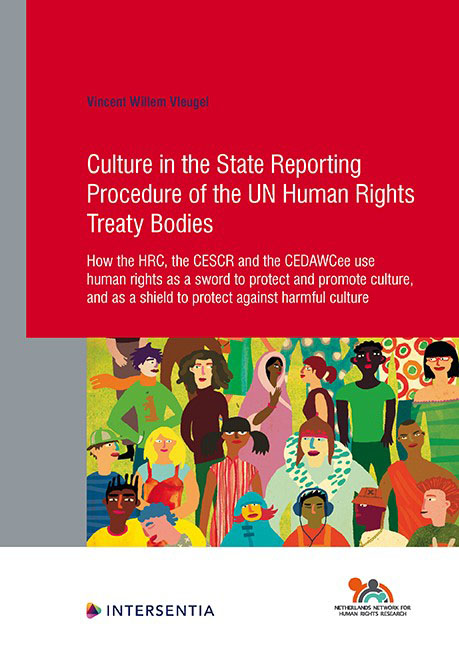 Culture in the State Reporting Procedure of the UN Human Rights Treaty Bodies
Culture in the State Reporting Procedure of the UN Human Rights Treaty Bodies Published online by Cambridge University Press: 11 November 2021
INTRODUCTION
Ever since the Universal Declaration of Human Rights (UDHR) was adopted in 1948, the universality of human rights in a world of profound cultural diversity has been the subject of endless controversy. The essence of these debates concerns the tensions inherent in adopting universal standards which can be applied in the different cultural contexts all over the world. How can human rights have universal value, and yet respect and accommodate genuine cultural diversity?
In order to analyse and understand how the UN human rights treaty bodies have dealt with the tensions which occur in the process of monitoring the implementation of what they consider universal human rights across different cultures, it is crucial first to explore the concepts and theories which are the foundation of this research: (1) what is ‘culture’ or ‘cultural diversity’?; (2) why and how do ‘culture’ and ‘cultural diversity’ interact – or even collide – with human rights?; (3) what does existing literature say about possible ways to reconcile ‘culture’ or ‘cultural diversity’ with human rights?
This chapter briefly introduces the concepts and theories which are important to the present research. First, key in avoiding conceptual confusion is an understanding of concepts as ‘culture’ and ‘cultural diversity’ as used in this study. Comprehension of the relation between power and culture is also vital: Culture is open to contestation, and the question of who defines the dominant values of a certain culture should be addressed (section 2.2). The subsequent section provides a brief outline of the diversity of cultures, cultural values and perspectives. It sets out to illustrate the (possible) tensions between the universality of human rights and the diversity of cultural contexts with some (necessarily simplified) observations on the perceived ‘Western bias’ of human rights, and on the major cultural values and ensuing human rights criticisms from Islamic, Asian and African viewpoints (section 2.3). At first, the debate in scholarship was framed in terms of a dichotomous opposition between the claims of cultural relativism and the claims of universality. The positions of universalists and cultural relativists were presented as diametrically opposed.
To save this book to your Kindle, first ensure [email protected] is added to your Approved Personal Document E-mail List under your Personal Document Settings on the Manage Your Content and Devices page of your Amazon account. Then enter the ‘name’ part of your Kindle email address below. Find out more about saving to your Kindle.
Note you can select to save to either the @free.kindle.com or @kindle.com variations. ‘@free.kindle.com’ emails are free but can only be saved to your device when it is connected to wi-fi. ‘@kindle.com’ emails can be delivered even when you are not connected to wi-fi, but note that service fees apply.
Find out more about the Kindle Personal Document Service.
To save content items to your account, please confirm that you agree to abide by our usage policies. If this is the first time you use this feature, you will be asked to authorise Cambridge Core to connect with your account. Find out more about saving content to Dropbox.
To save content items to your account, please confirm that you agree to abide by our usage policies. If this is the first time you use this feature, you will be asked to authorise Cambridge Core to connect with your account. Find out more about saving content to Google Drive.